Affiliate links on Android Authority may earn us a commission. Learn more.
LG's Quad DAC: Everything you need to know
Published onNovember 11, 2024
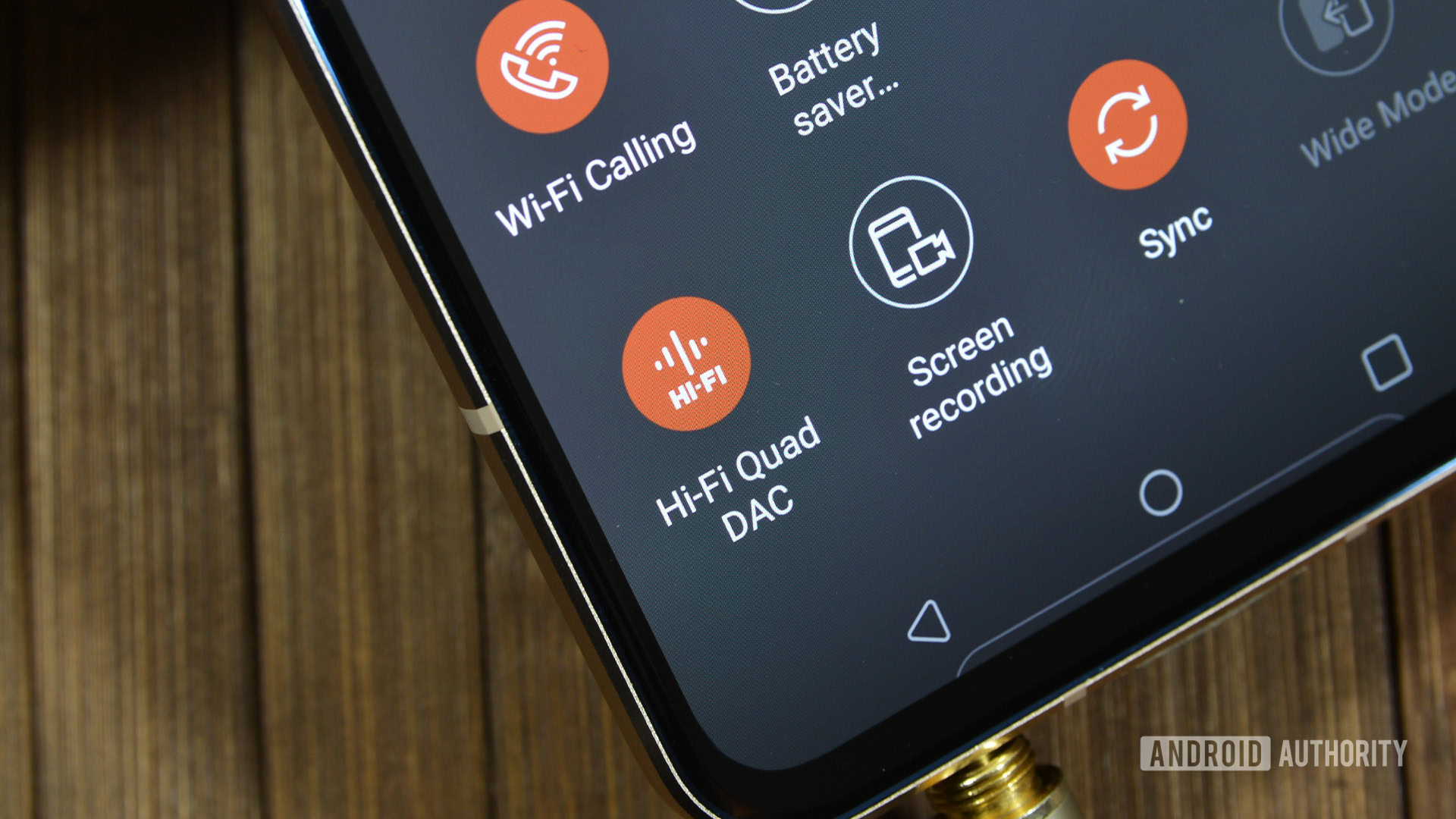
Indeed, LG’s Quad DAC added a lot of advantages and put LG flagship phones on par with many audiophile-grade devices. However, this tech has always remained somewhat of a mystery to the general public. Not helping things, LG has historically not given out a ton of information about Quad DACs. Luckily, that’s a problem we can help fix. Here is everything you need to know about the LG Quad DAC.
Editor’s note: This article was originally published in 2020 and has received yearly updates for relevance.
What is a DAC and what is an amp (and SNR)?
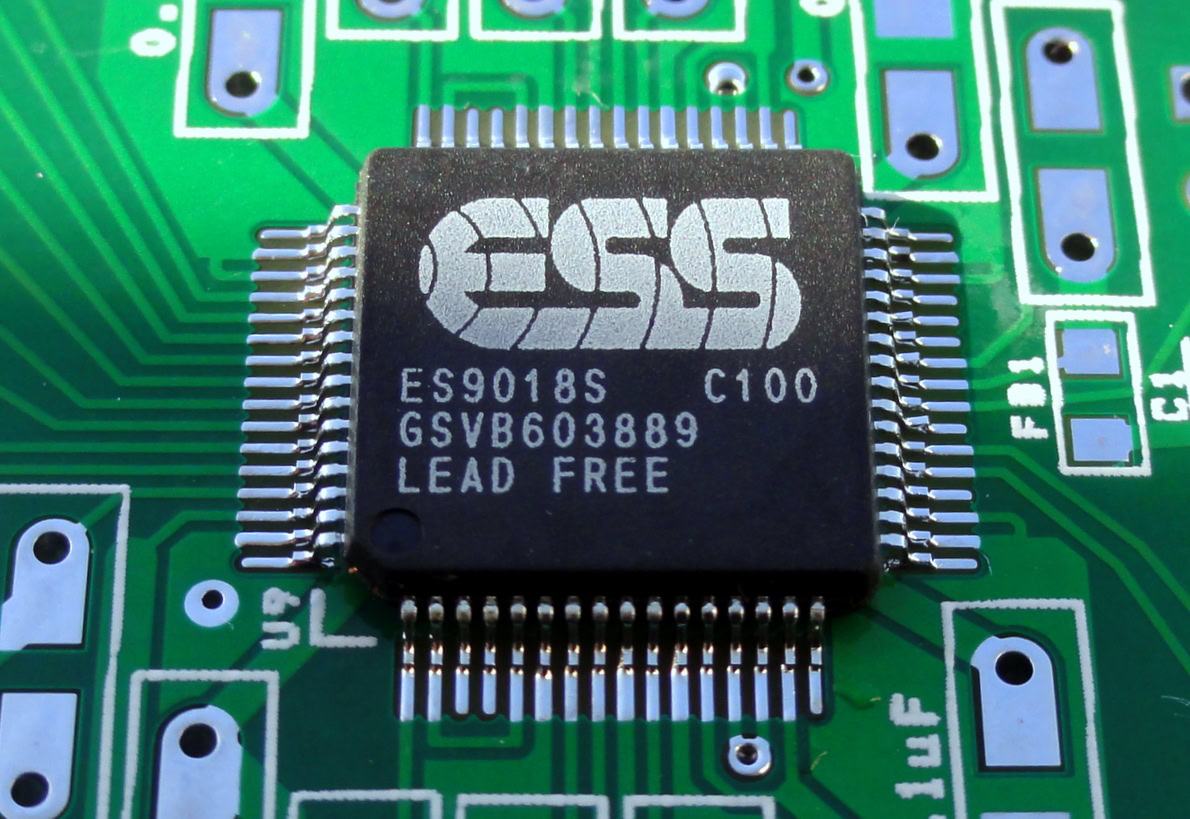
First, let’s talk briefly about what DACs and amps actually are. The term DAC stands for digital-to-analog conversion. In electronics, it’s a component that basically turns your music from 1s and 0s into an analog signal. The signal runs to the headphones, which then amplifies the signal into your ears. Every device with a headphone jack or speakers has a DAC. For instance, Qualcomm uses its Aqstic audio platform for its Snapdragon chips. You absolutely cannot have a device that produces sound without a DAC somewhere, because 1s and 0s don’t make noise themselves.
Basically, the DAC makes sound happen on electronics.
An amp is also a piece of tech all devices with sound have. The amp, short for amplifier, is the piece of tech responsible for, well, amplifying the signal from the DAC. Almost all things that produce sound have both a DAC and an amplifier.
Finally, let’s talk briefly about SNR, or signal-to-noise ratio. To put it simply, SNR is a measurement that compares the level of an audio signal with the level of background noise. In theory, the higher the number, the better your music sounds. SoundGuys has an excellent post about audio bit-depth and SNR here if you want to read the longer version.
What is the LG Quad DAC?
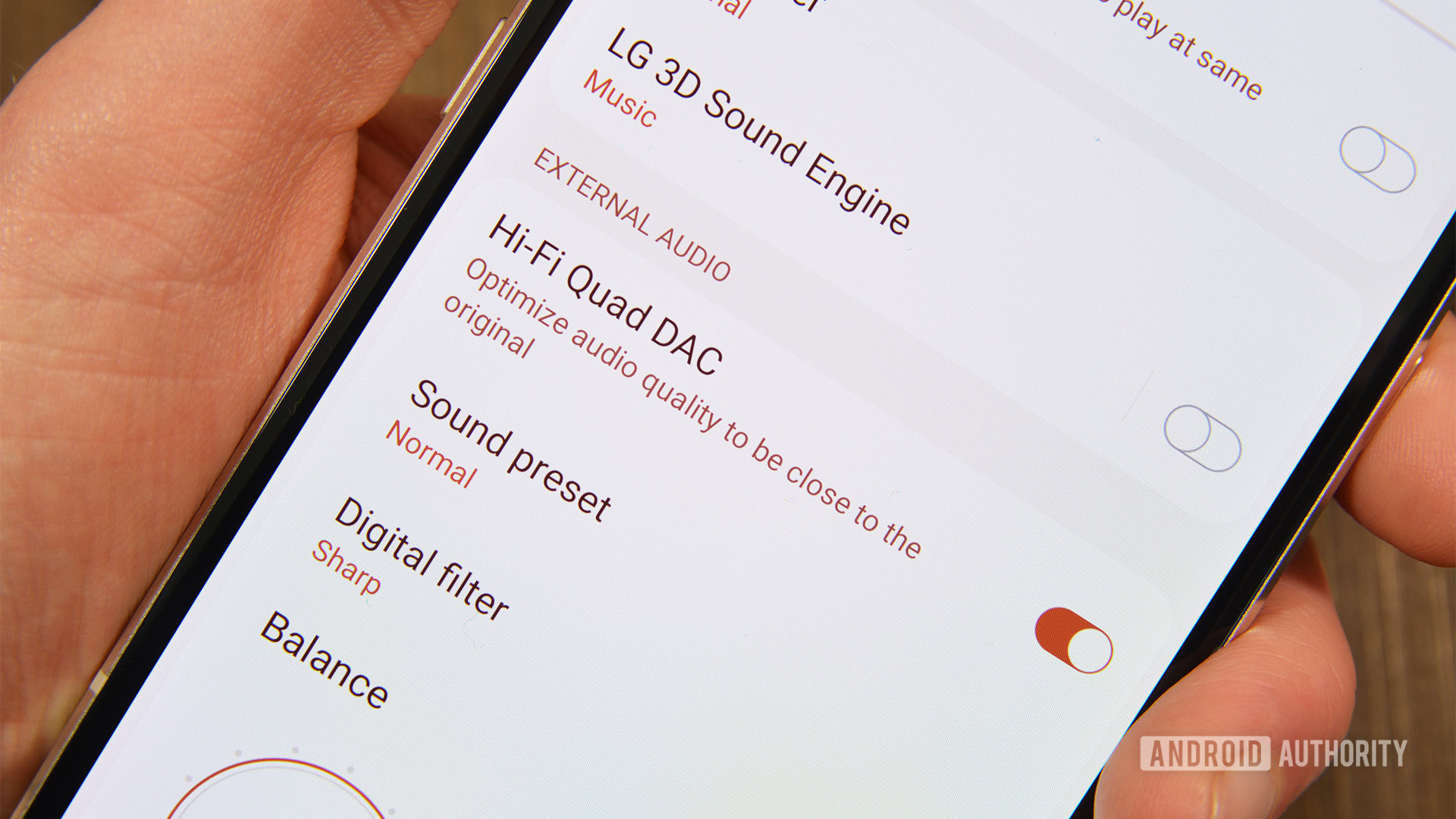
LG's Quad DAC is surprisingly complicated.
Despite its name, the Quad DAC actually works like any other amp-and-DAC combo. The amplifier generates a lot more power than your standard device with a headphone jack, thus giving LG devices the ability to power higher impedance headphones like the 300-ohm Sennheiser HD600. Meanwhile, the DAC portion supports audio files with up to 32-bit audio at a 384 kHz sample rate (as of the LG V60). The numbers haven’t changed much over the years.
Here are the technical specs of the Quad DAC as of the LG V60:
- Support for audio files with up to 32-bit audio at 384 kHz sample rate. For reference, CD-quality audio is 16-bit, 44.1 kHz.
- SNR 122dB
- 2Vrms output level (LG told us 1.934Vrms based on testing with the Sennheiser HD800)
- 75-point volume adjustment
- Support for DSD, MQA, ALAC, and many other audio file types, according to LG.
- Automatically scales power for low impedance (8ohm to 50ohm) versus high impedance (up to 600ohm) based on the headphones you use.
- Left and right side balance controls
- 0.001% THD
- 1.7uV noise level
You get almost none of those things from your usual headphone jack on a smartphone and that’s part of what makes LG phones special. Finally, before we move on, here are the model numbers of every ESS Sabre DAC featured in an LG smartphone.
- V10 – ESS Sabre 9018 DAC, Sabre 9602 headphone amp
- V20 – ESS Sabre ES9218 Quad DAC (tuned by LG or B&O Play, depending on the market)
- V30 and G6 (Asian market G6 only) – ESS Sabre ES9218P Quad DAC (tuned by B&O Play)
- V40 and G7 – ESS Sabre ES9218P Quad DAC (tuned with Meridian)
- V50 and G8 (and G8x) – ESS Sabre ES9218P Quad DAC (tuned by Meridian)
- V60 – ESS Sabre ES9219 Quad DAC (most likely tuned by LG)
There are a few things to note. The LG V10 did not have a Quad DAC and it was the only model with a separate amp. Every model afterward came with a Quad DAC as well as an integrated amp. Additionally, the hardware has actually changed very little from the introduction of the first Quad DAC. The biggest changes came from the tuning, until the LG V60 with its ES9219 Quad DAC.
How to use the LG Quad DAC
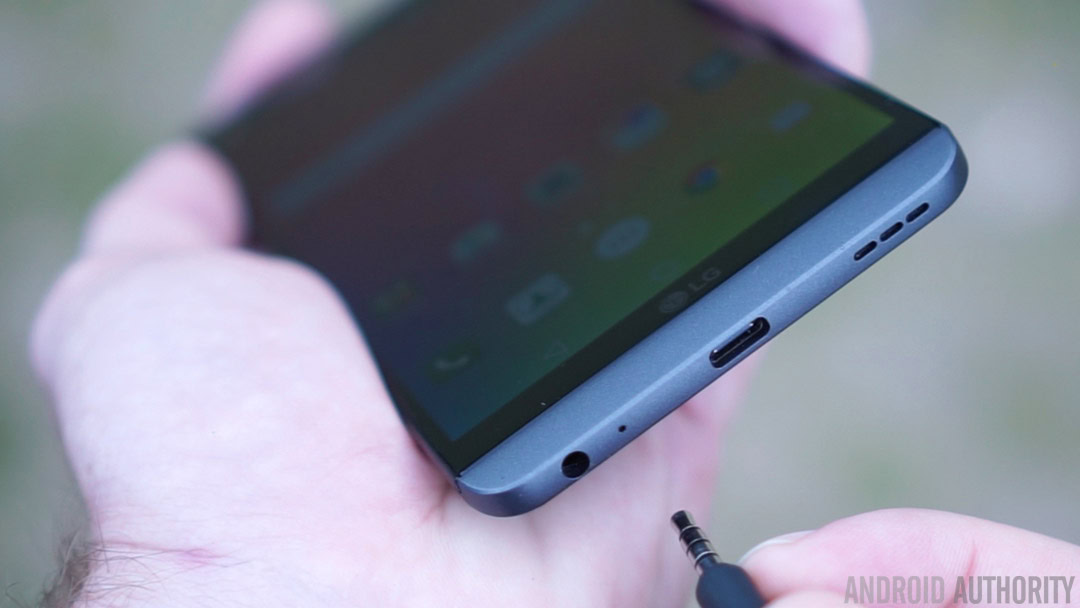
- Hi-Fi Quad DAC toggle – The toggle is available in the quick settings. It turns the Quad DAC on and off. Long pressing the toggle instantly takes you to the Quad DAC settings menu.
- Volume – The volume slider in the DAC settings is different from normal. It’s a 75-stage slider with increments ranging 0 to 75 (technically, that’s 76 stages). You can fine tune your volume here.
- Normalize volume – This setting normalizes all media to be about the same volume. We actually recommend leaving this off and adjusting the volume yourself unless you really need it.
- Equalizer – LG includes a 10-band, system-wide equalizer ranging from 32 Hz to 16 kHz. Additionally, there are 14 presets, including a treble booster, a bass booster, and a vocal booster setting.
- LG 3D Sound Engine – LG attempts to improve the audio by adding a 3D aspect to it. There are options for Voice, Music, and Cinema along with an Auto function to switch between them automatically. The setting adds a bit of depth and reverb to the sound at the cost of realism.
- Hi-Fi Quad DAC – This setting enables and disables the Quad DAC. It performs exactly the same function as the quick settings toggle above.
- Sound preset – Sound preset is actually a second set of equalizer presets except these are controlled by the DAC. The presets are also system-wide but you can’t create custom profiles.
- Digital filter – Delta-sigma DACs like LG’s chips generally need a digital filter in order to function, so this setting can’t be turned off. The digital filter changes the characteristics of the sound, but this isn’t a post-processing step (and it doesn’t affect the frequency response). There isn’t a huge difference between the three settings (Short, Sharp, and Slow). Sharp is the default setting and it should work for most people.
- Balance – Balance lets you adjust the volume between the left and right earcups. This is useful for fixing any imbalance on a pair of headphones or adjusting the volume for those partially deaf in one ear.
Adjust those settings while listening to your favorite tunes to get everything the way you want it. After that, you sit back and enjoy your music.
LG Quad DAC tips and tricks
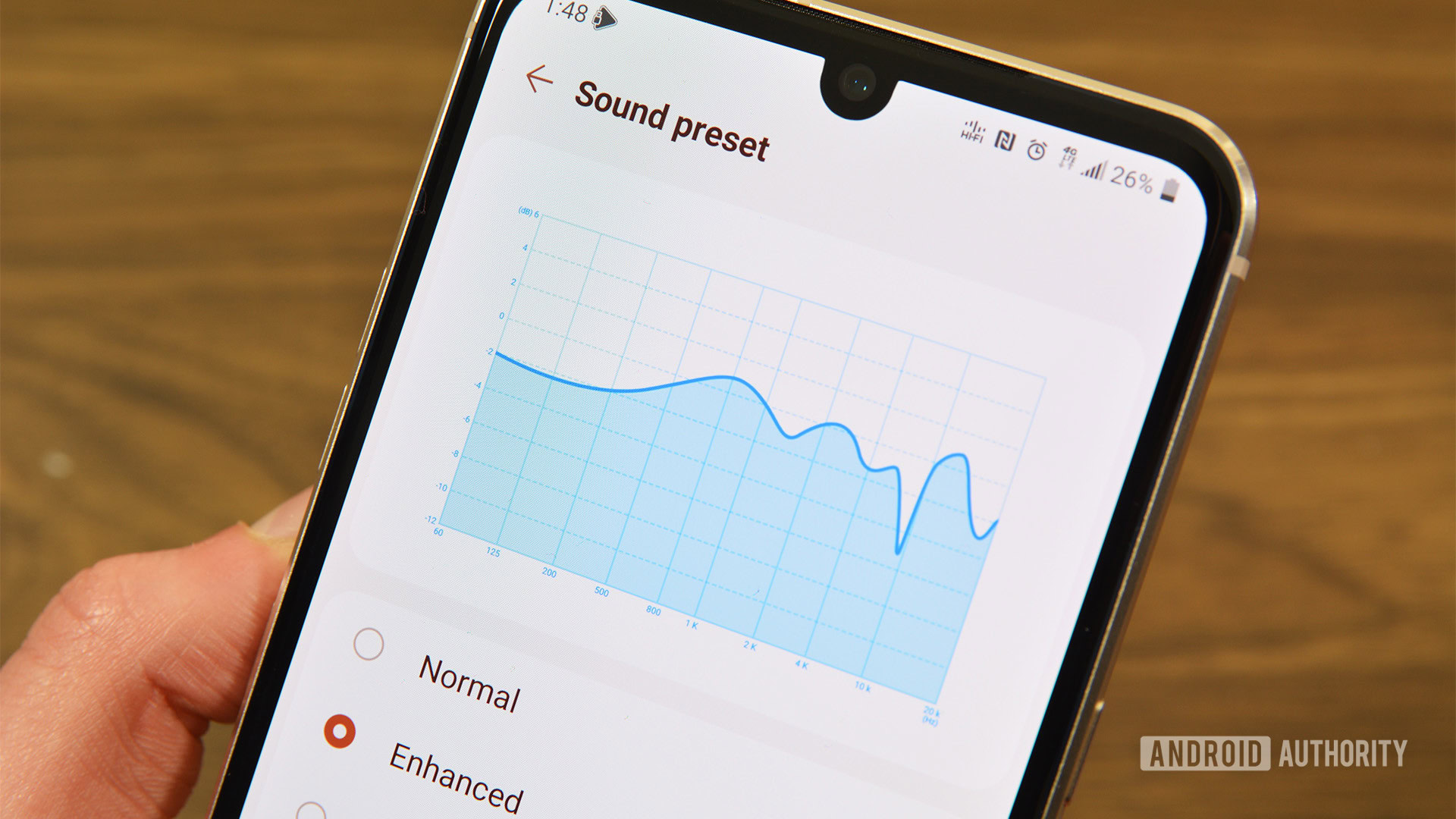
A lot of music apps don’t sample properly
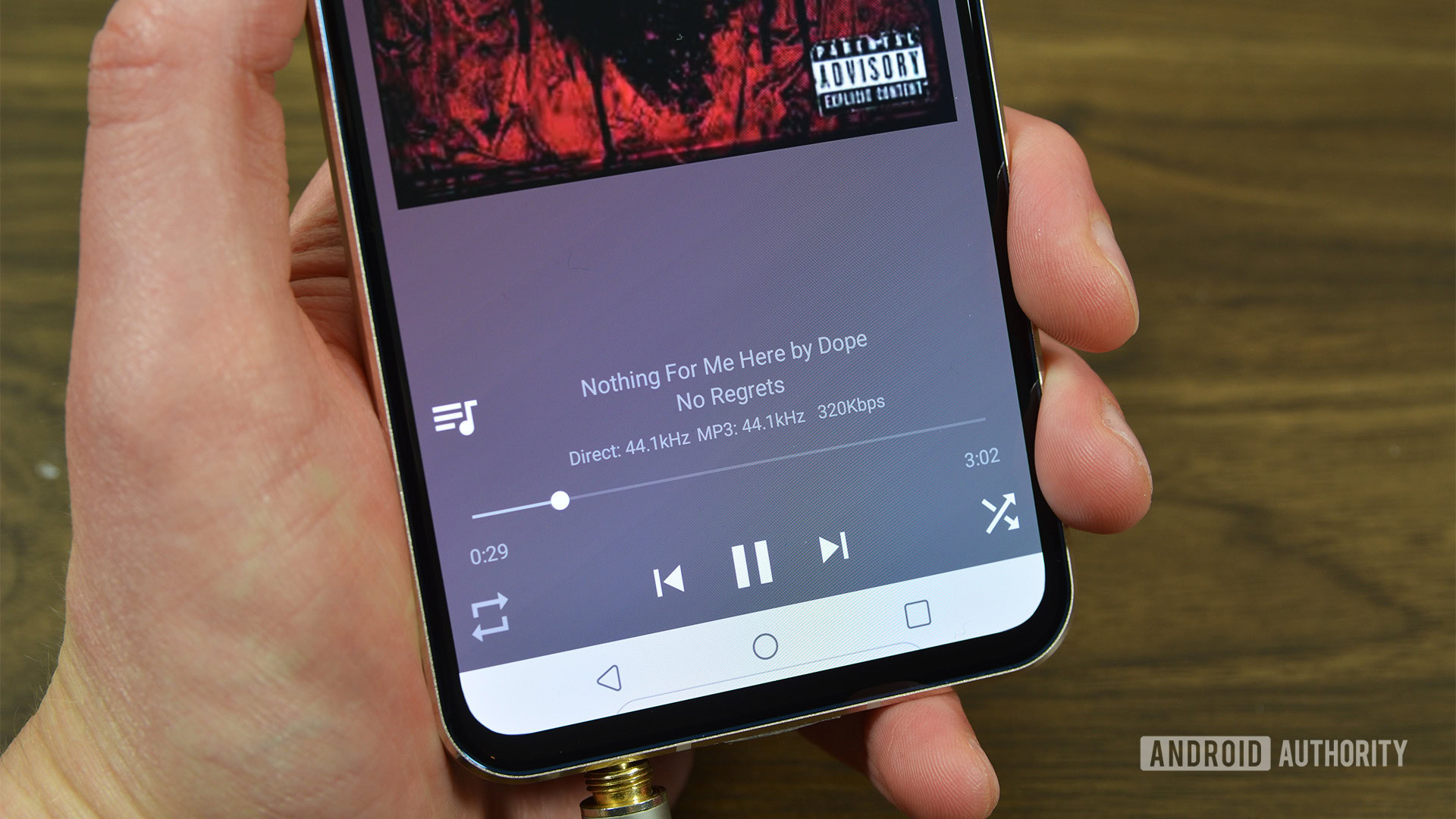
There are only a few ways to fix this. The common knowledge fix is to purchase the app UAPP (USB Audio Player Pro) for $8. The app plays almost any file at its native sample rate and bit depth, including MQA and DSD files. It also plays nice with UPnP devices, network devices, and you can even connect your TIDAL account and listen to MQA albums through UAPP. It’s pretty awesome. There are other solutions, but UAPP is the easy, all-in-one, “works all the time” solution.
It’s a bit of an expensive Android music app, but it’s totally worth it for audiophiles with music collections in super high-quality audio formats. Those of you with libraries in MP3 can disregard all of this since the sample rate isn’t higher than 16-bit, 44 kHz. You folks can use whatever music player you want. Another reasonable option for this issue is Poweramp. You have to enable some things in the settings and it’s not quite as powerful as UAPP, but it does support the LG Quad DAC at higher sample rates and bit depths as well.
See which mode the LG Quad DAC is in
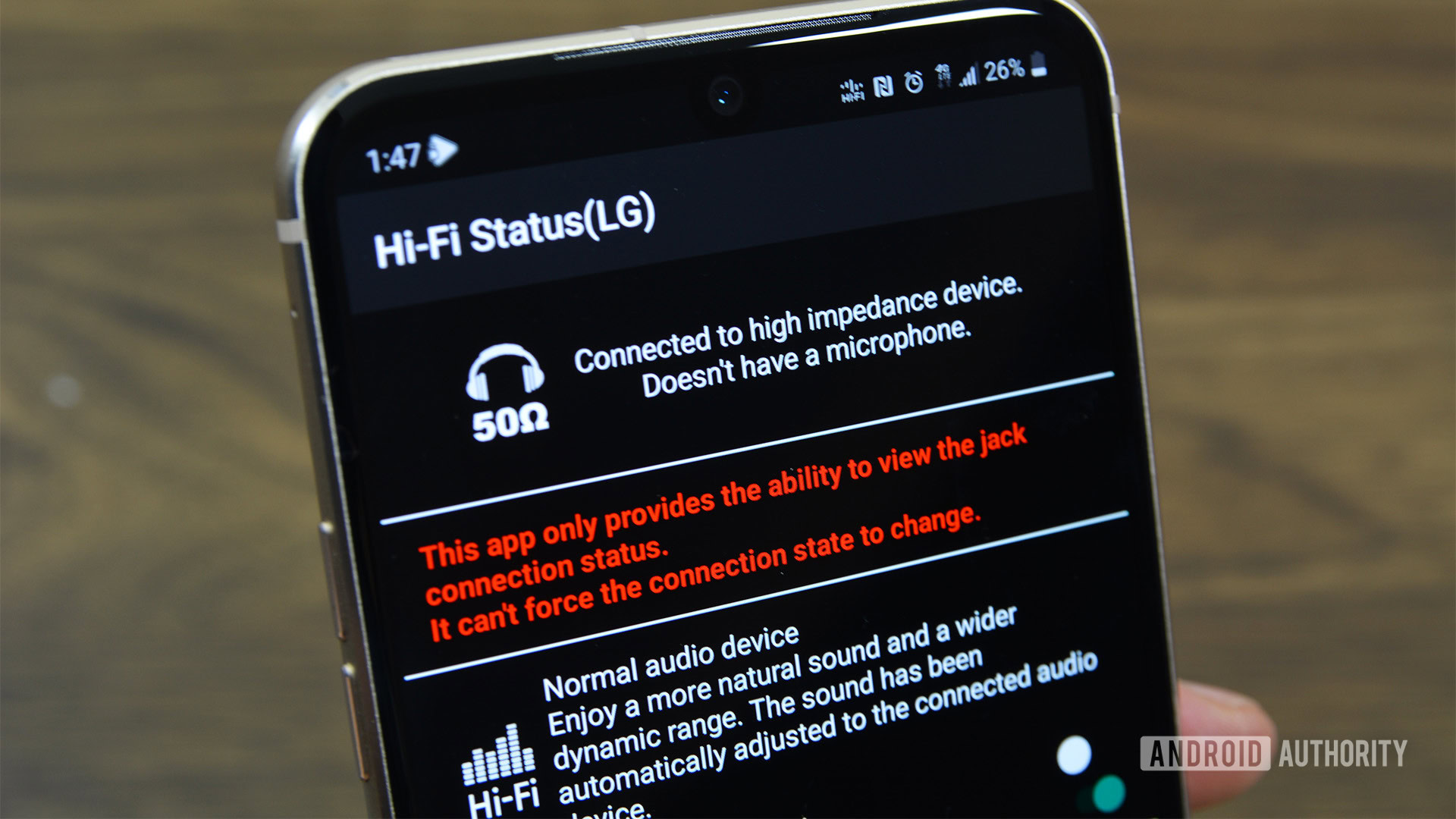
Earlier LG devices had a prompt in the settings to tell you which one you had active. Later LG devices stopped this practice for some bewildering reason, but you can restore the functionality with the Hi-Fi Status (LG) app. The app reads the state of the Quad DAC when you plug in headphones and you can easily see if you’re in low impedance or high impedance mode. It costs $0.99, but it should work with every LG device with the Quad DAC. We tested it with the LG V60 around the time of its launch and it worked fine then.
The app only updates its state when opened (on the LG V60 at least), so it’s a bit annoying to use. Just close it out of recent apps and re-open. That bug may get fixed in a future update and it’s honestly not that bad. You can also configure it to give you toast messages or a persistent notification.
LG has been a leader in audio for years and the Quad DAC is a testament to that. There are few devices that even compete. Many devices have special DACs, but none of them have a Quad DAC system and fewer still have a third-party amp to power high-end headphones. The one-two combo allows LG phones to power the best of the best headphones and delivers excellent sound in the process. No other modern mobile phone can do that.